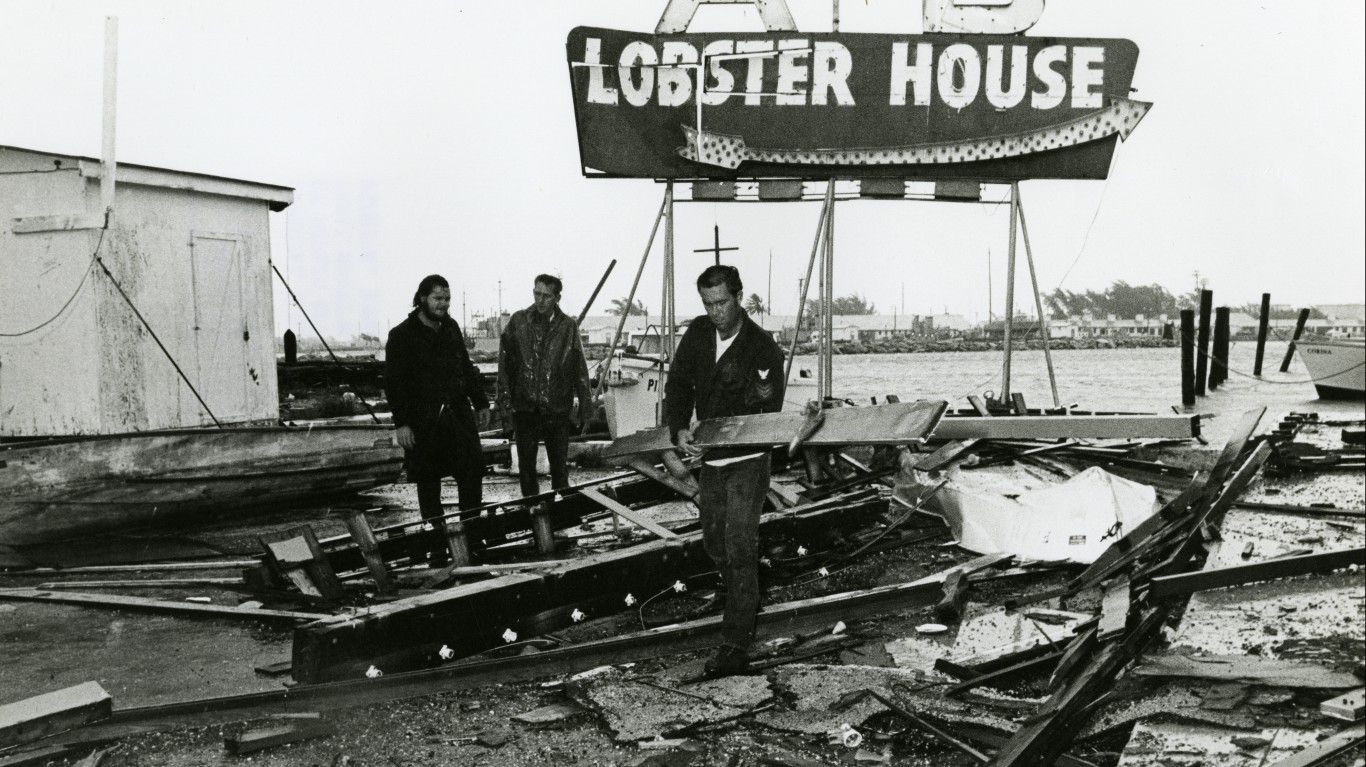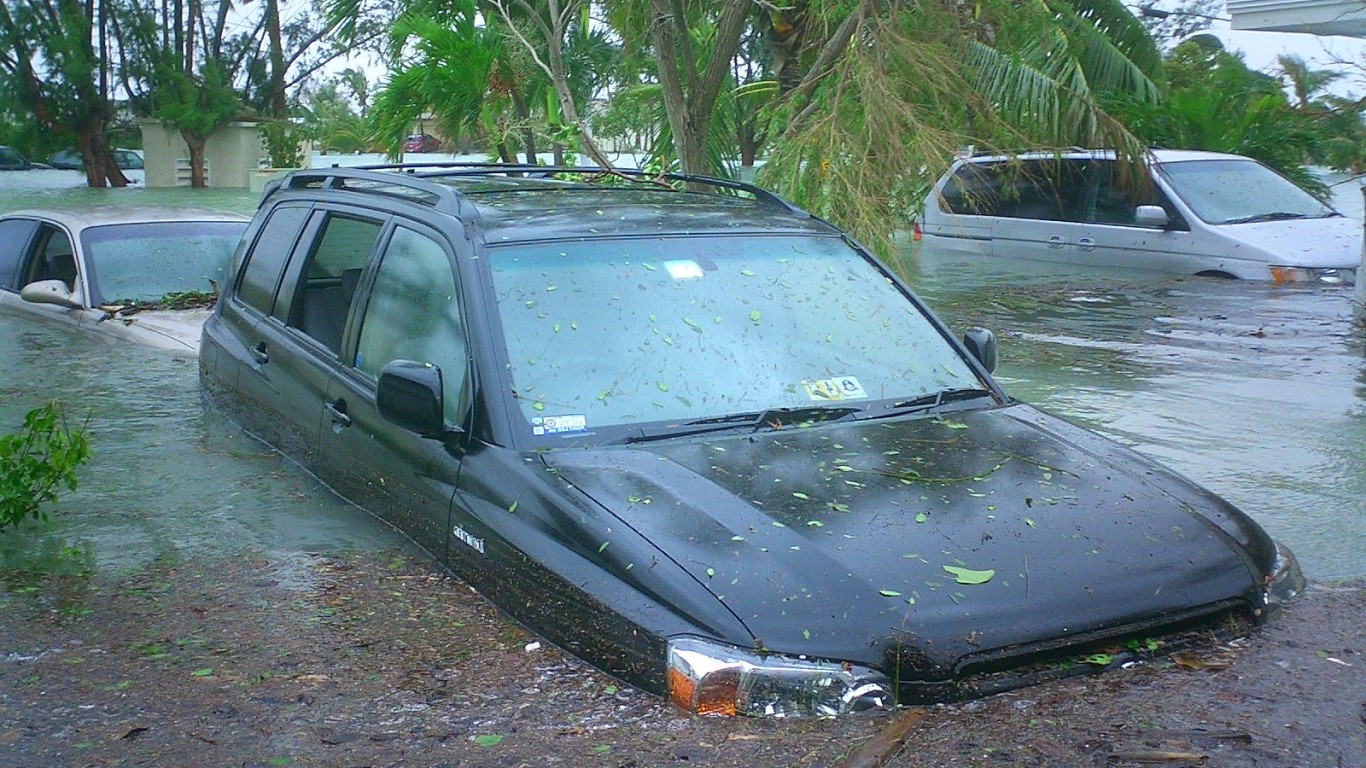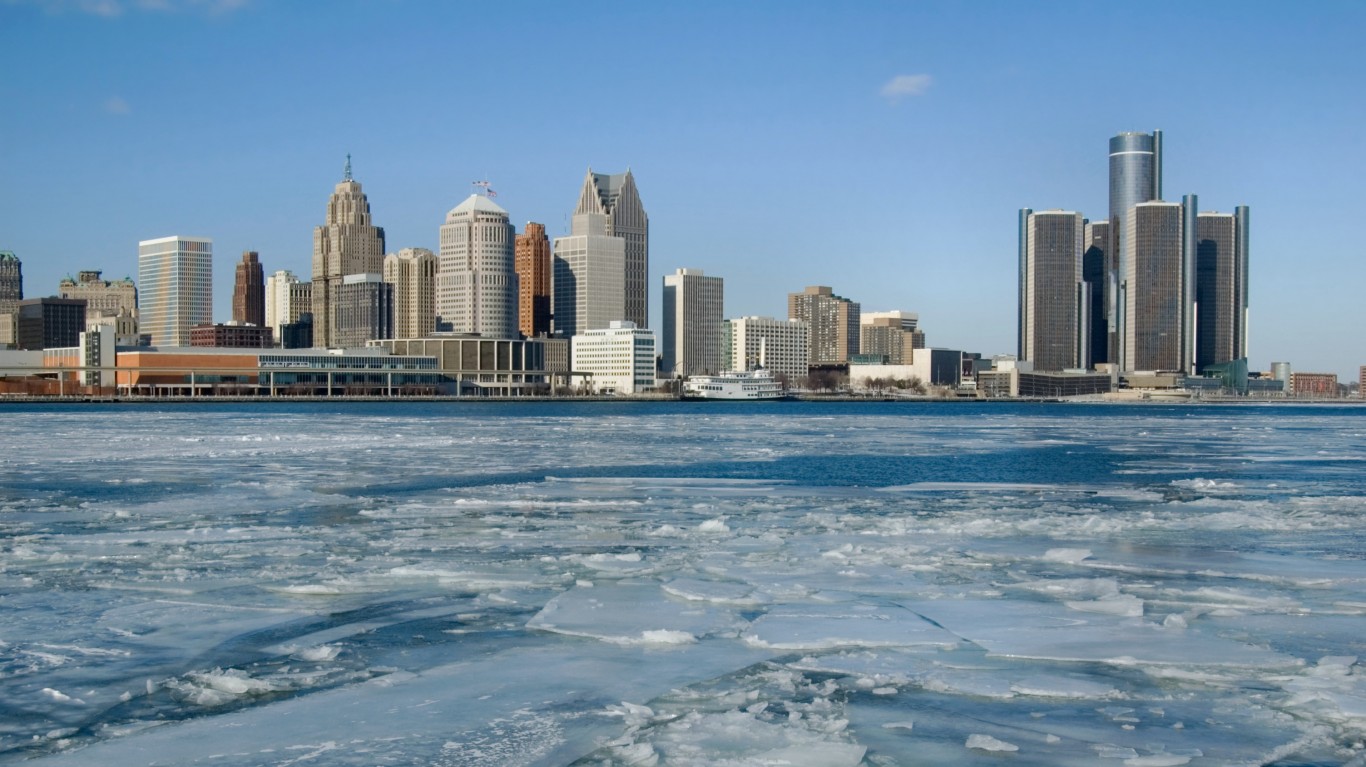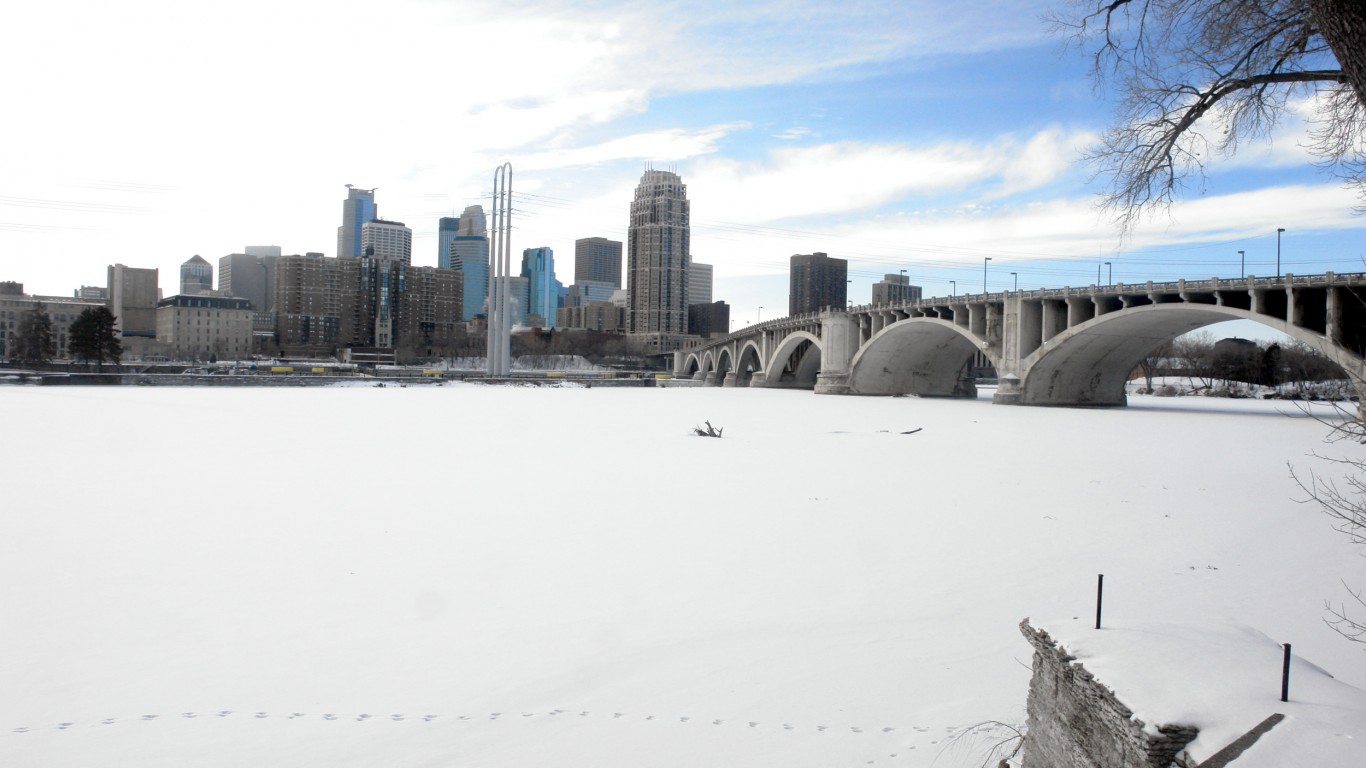
Residents along the coasts of Florida, Georgia, and South Carolina faced hurricane-force winds and life-threatening storm surge this week after Hurricane Ian made its first landfall west of Fort Myers, Florida, on Wednesday. The Tampa Bay and St. Petersburg areas are also experiencing severe flooding and hurricane winds.
Many of the region’s more than 4 million residents live in low-lying neighborhoods that are vulnerable to storm surge. According to the American Red Cross, more than 33,000 people sought refuge in 260 evacuation shelters across Florida to escape Ian on Wednesday night.
Hurricane Ian follows after a series of recent horrific climate disasters. Since the start of June and the hurricane season, unusually heavy monsoon rains caused historic floods in Pakistan, Hurricane Fiona brought destruction to Puerto Rico and Atlantic Canada, the worst drought in 500 years started wreaking havoc in Europe, and unprecedented heat waves dried up rivers in China, affecting 900 million people.
Due in large part to atmospheric warming caused by emissions from human activities, once-in-a-life-time weather events are occurring regularly and with increasing frequency all around the world, including the United States. (These are countries facing the worst climate emergencies.)
According to a July study by international scientists in Nature Climate Change, the annual number of cyclones forming globally is decreasing significantly under global warming. However, the intensity of tropical storms is rising, and some are moving at slower speeds, elevating the risk of damage to coastal communities. And while enforcing building codes, investing in hurricane resistant design techniques, and other infrastructure improvements can help mitigate storm damage — there is no such thing as a hurricane-proof home.
Of the 51 most costly storms in U.S. history, 28 – including the top 10 – have occurred in the last 20 years. Based on recent estimates that Hurricane Ian has already caused over $100 billion in damage, the Category 4 storm is likely to also rank among the most costly tropical cyclones in U.S. history. Hurricane Katrina, which caused over 1,800 fatalities and $186.3 billion in damages to New Orleans and the surrounding area in August 2005, is the most costly storm in U.S. history. (Find out if Hurricane Katrina is among the deadliest billion dollar natural disasters in U.S. history.)
To identify the costliest U.S. tropical cyclones, 24/7 Wall St. reviewed the cost of hurricanes throughout history, estimated by the National Oceanic and Atmospheric Administration’s National Centers for Environmental Information. Both the inflation-adjusted (using 2022 consumer price index) and unadjusted cost of each storm came from the report. The estimated number of deaths associated with each storm was obtained from news reports.
Click here to see the costliest U.S. tropical cyclones in the US.

51. Bob (1991)
> U.S. landfall: Big Bend area of Florida between Apalachicola and Cedar Key
> Adjusted cost: $3.2 billion
> Unadjusted cost: $1.5 billion
> Deaths: 17
[in-text-ad]
50. Lee (2011)
> U.S. landfall: The coast of southern Louisiana, south-southeast of Intracoastal City
> Adjusted cost: $3.2 billion
> Unadjusted cost: $2.5 billion
> Deaths: 18
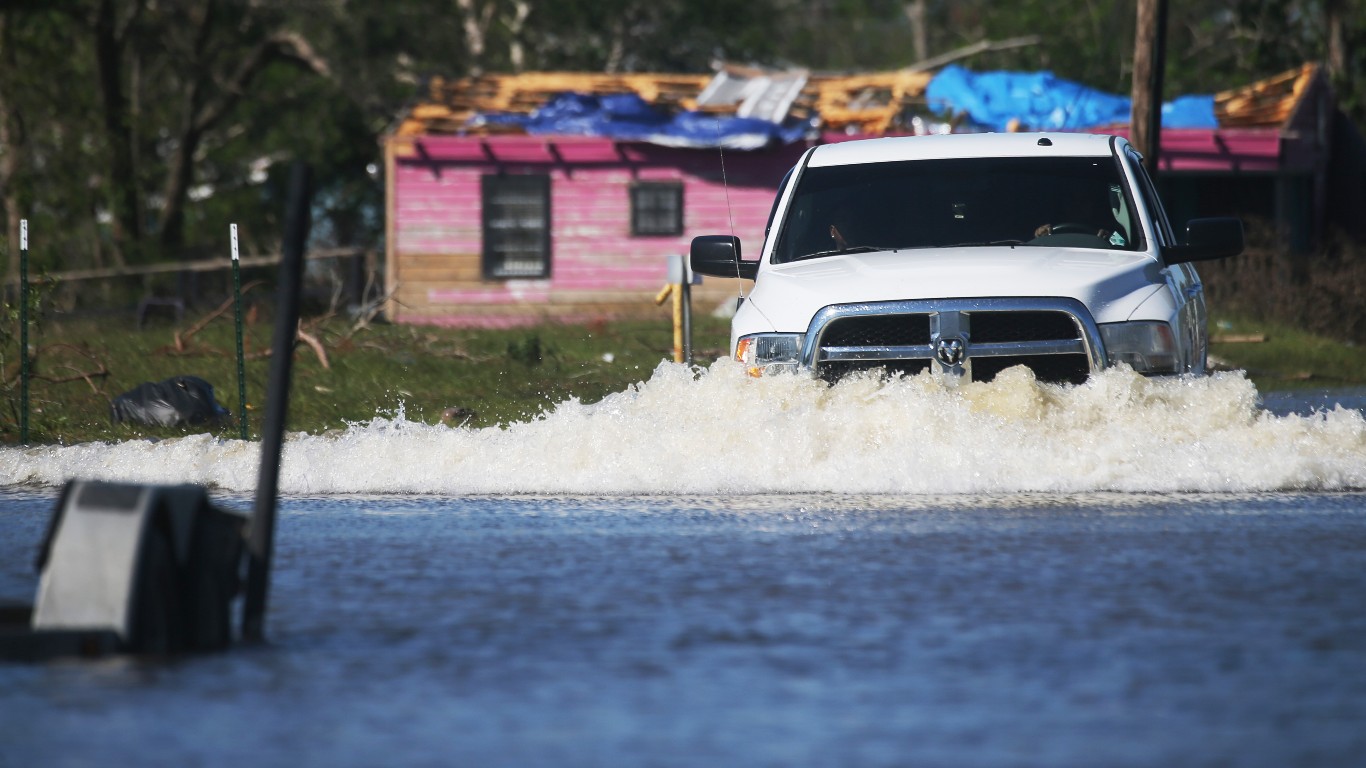
49. Delta (2020)
> U.S. landfall: The Yucatan Peninsula and in southwestern Louisiana
> Adjusted cost: $3.2 billion
> Unadjusted cost: $2.9 billion
> Deaths: 6

48. Elena (1985)
> U.S. landfall: Near Biloxi, Mississippi
> Adjusted cost: $3.5 billion
> Unadjusted cost: $1.3 billion
> Deaths: 9
[in-text-ad-2]
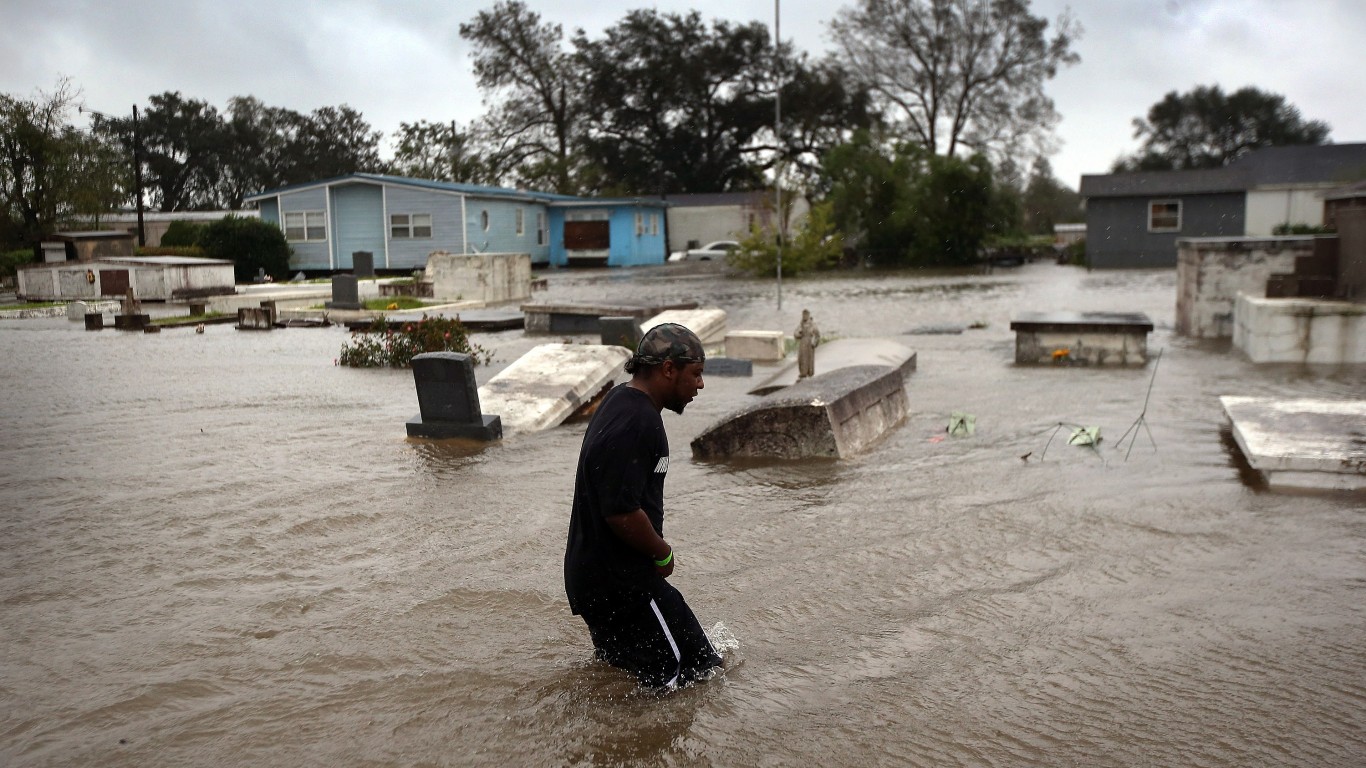
47. Isaac (2012)
> U.S. landfall: Southeastern Louisiana
> Adjusted cost: $3.5 billion
> Unadjusted cost: $2.8 billion
> Deaths: 41

46. Dennis (2005)
> U.S. landfall: Across the western Florida Panhandle into southwestern Alabama
> Adjusted cost: $3.7 billion
> Unadjusted cost: $2.5 billion
> Deaths: 88
[in-text-ad]

45. Donna (1960)
> U.S. landfall: 30 miles east of Sarasota, Florida; southeast New England
> Adjusted cost: $3.8 billion
> Unadjusted cost: N/A
> Deaths: 364

44. Juan (1985)
> U.S. landfall: Near Morgan City, Louisiana; West of Pensacola, Florida
> Adjusted cost: $4.0 billion
> Unadjusted cost: $1.5 billion
> Deaths: 4

43. Marilyn (1995)
> U.S. landfall: U.S. Virgin Islands
> Adjusted cost: $4.0 billion
> Unadjusted cost: $2.1 billion
> Deaths: 24
[in-text-ad-2]
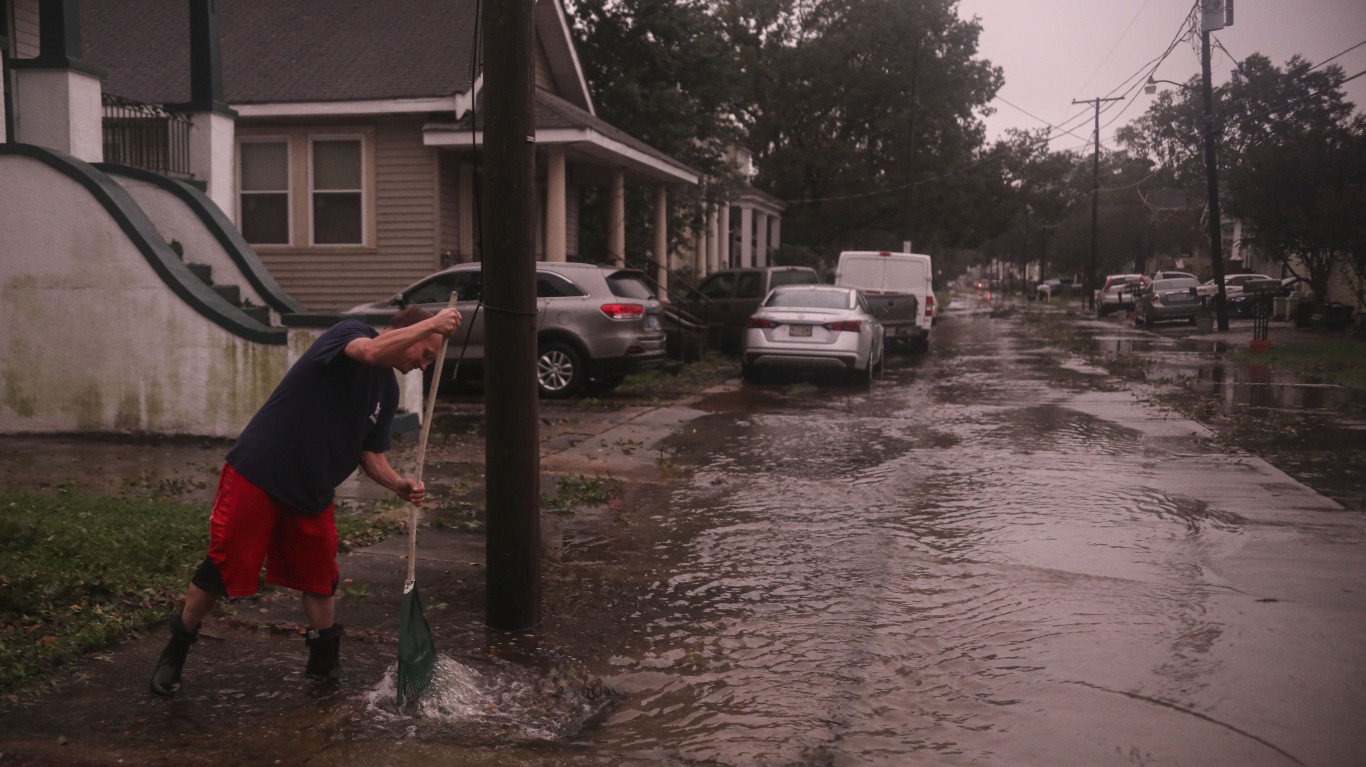
42. Zeta (2020)
> U.S. landfall: Southeastern Louisiana
> Adjusted cost: $4.9 billion
> Unadjusted cost: $4.4 billion
> Deaths: 9

41. Carol (1954)
> U.S. landfall: Point O’ Woods, Long Island, New York
> Adjusted cost: $5.0 billion
> Unadjusted cost: N/A
> Deaths: 72
[in-text-ad]
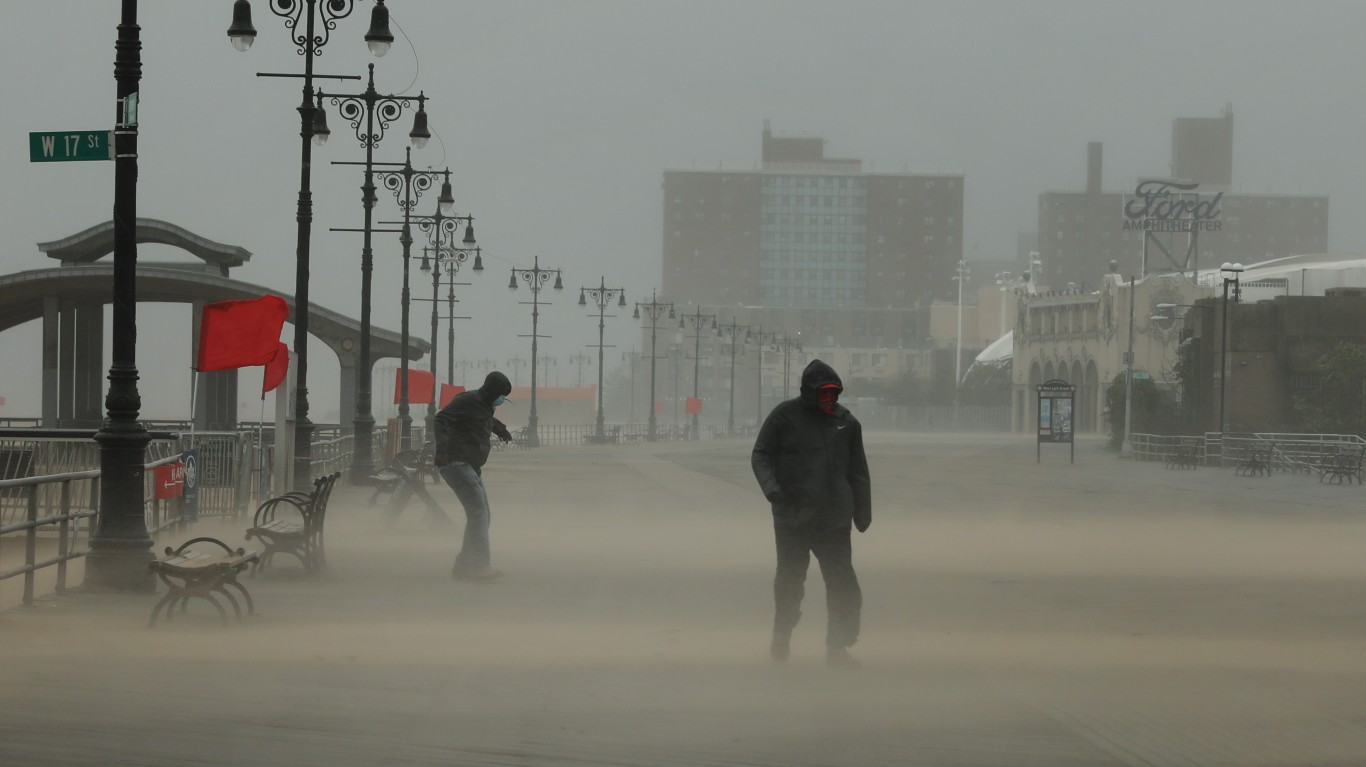
40. Isaias (2020)
> U.S. landfall: Ocean Isle Beach, North Carolina
> Adjusted cost: $5.3 billion
> Unadjusted cost: $4.8 billion
> Deaths: 18

39. Imelda (2019)
> U.S. landfall: Southeastern Texas
> Adjusted cost: $5.7 billion
> Unadjusted cost: $5.0 billion
> Deaths: 7

38. Great Atlantic Hurricane (1944)
> U.S. landfall: Point Judith, Rhode Island
> Adjusted cost: $5.8 billion
> Unadjusted cost: N/A
> Deaths: 390
[in-text-ad-2]
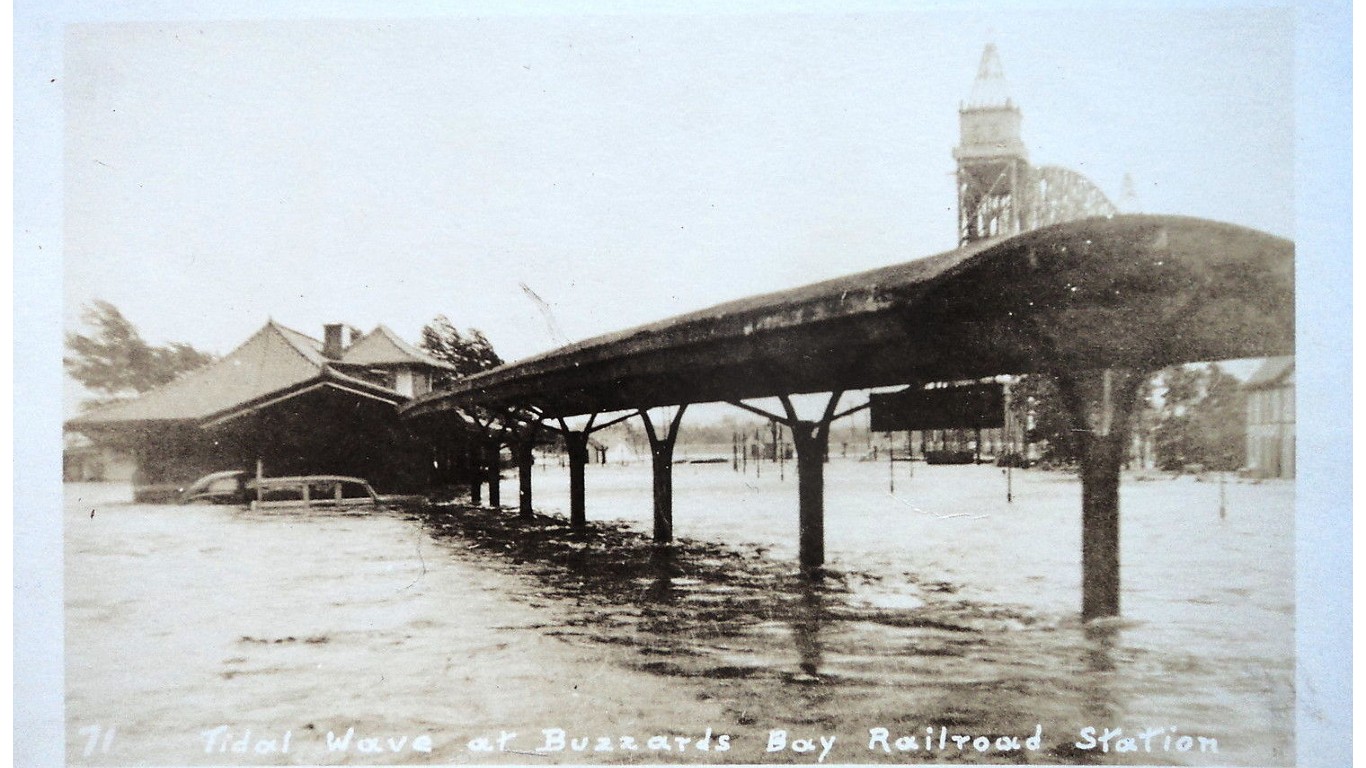
37. Long Island Express (1938)
> U.S. landfall: Long Island and Southern Connecticut
> Adjusted cost: $6.3 billion
> Unadjusted cost: N/A
> Deaths: 600

36. Iniki (1992)
> U.S. landfall: Kauai, Hawaii
> Adjusted cost: $6.4 billion
> Unadjusted cost: $3.1 billion
> Deaths: 6
[in-text-ad]
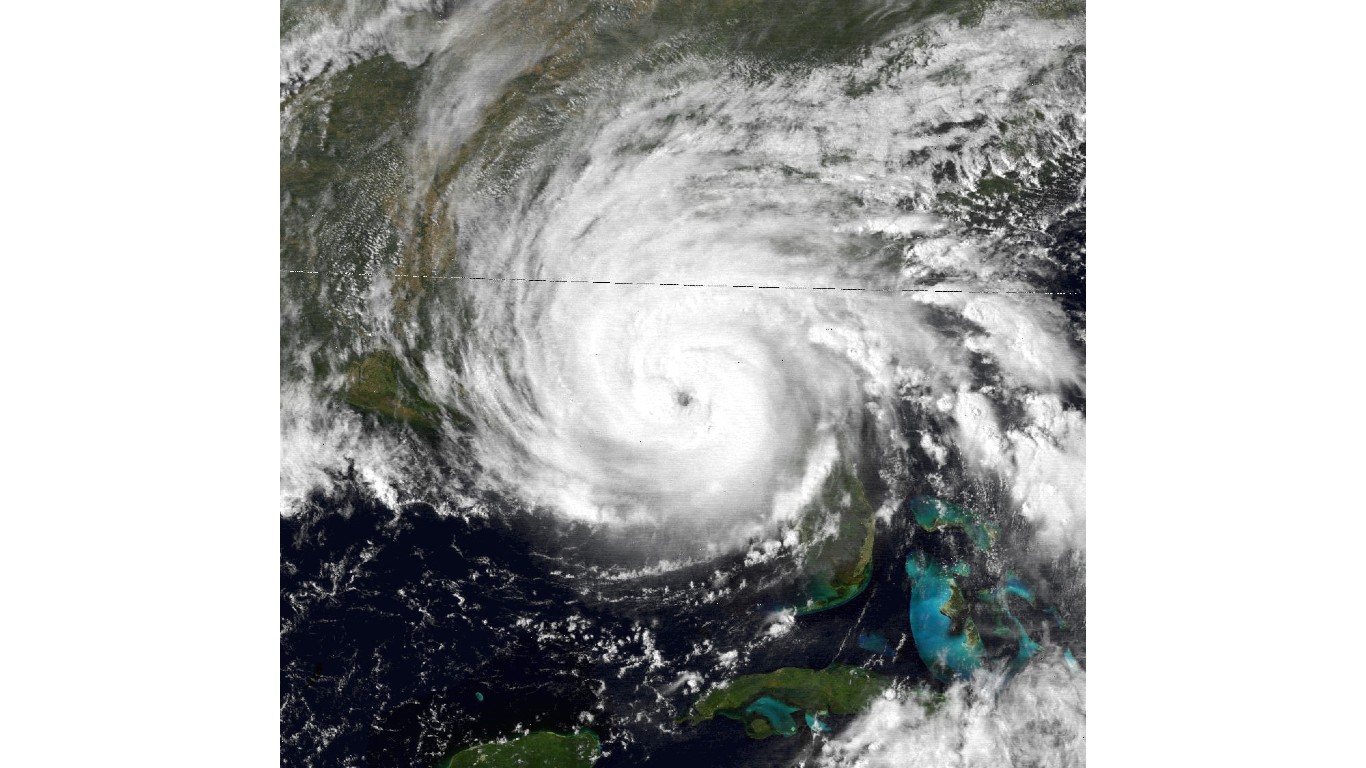
35. Frederic (1979)
> U.S. landfall: Dauphin Island, Alabama
> Adjusted cost: $6.9 billion
> Unadjusted cost: $1.7 billion
> Deaths: 12

34. Celia (1970)
> U.S. landfall: North of Corpus Christi, Texas
> Adjusted cost: $7.0 billion
> Unadjusted cost: N/A
> Deaths: 28
33. Gustav (2008)
> U.S. landfall: Louisiana coast
> Adjusted cost: $8.0 billion
> Unadjusted cost: $6.0 billion
> Deaths: 153
[in-text-ad-2]

32. Sally (2020)
> U.S. landfall: Alabama coast; western Florida Panhandle
> Adjusted cost: $8.1 billion
> Unadjusted cost: $7.3 billion
> Deaths: 4
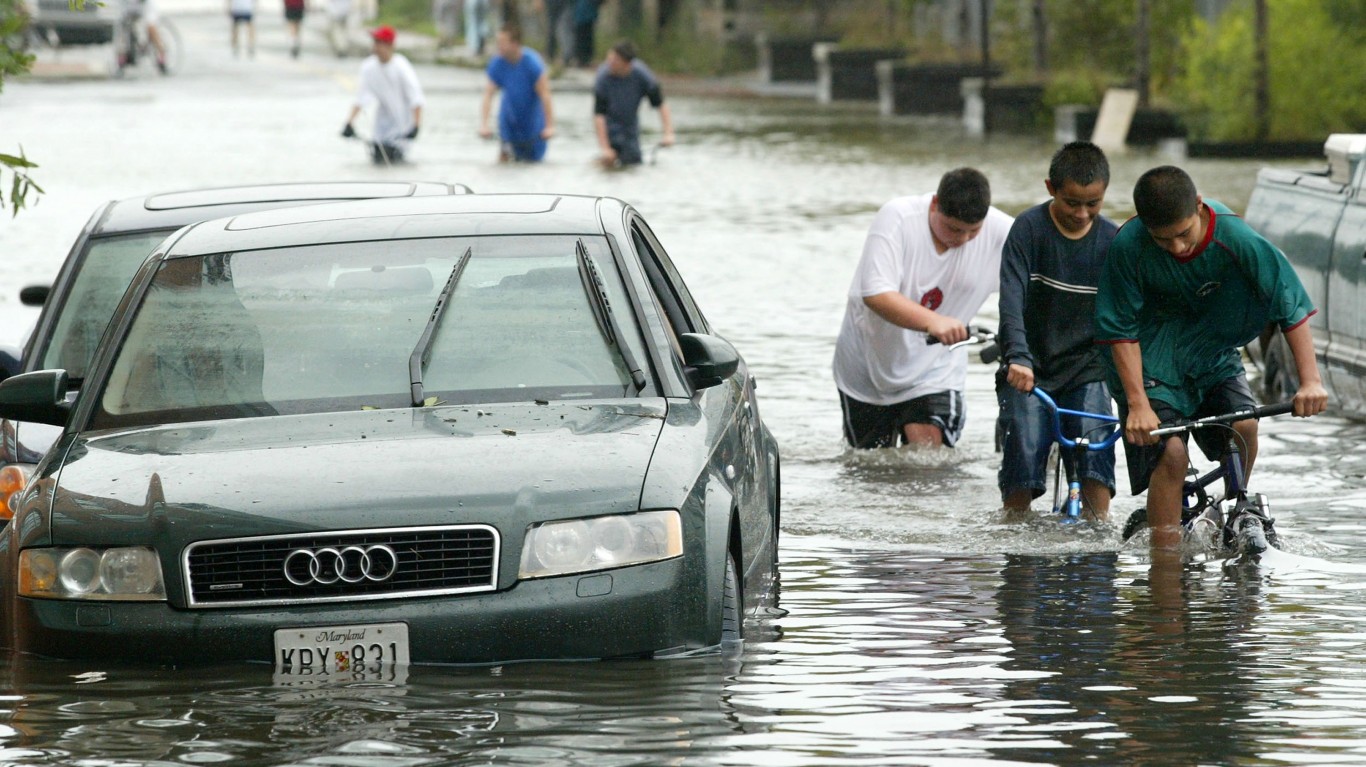
31. Isabel (2003)
> U.S. landfall: Near Drum Inlet, North Carolina
> Adjusted cost: $8.7 billion
> Unadjusted cost: $5.5 billion
> Deaths: 51
[in-text-ad]
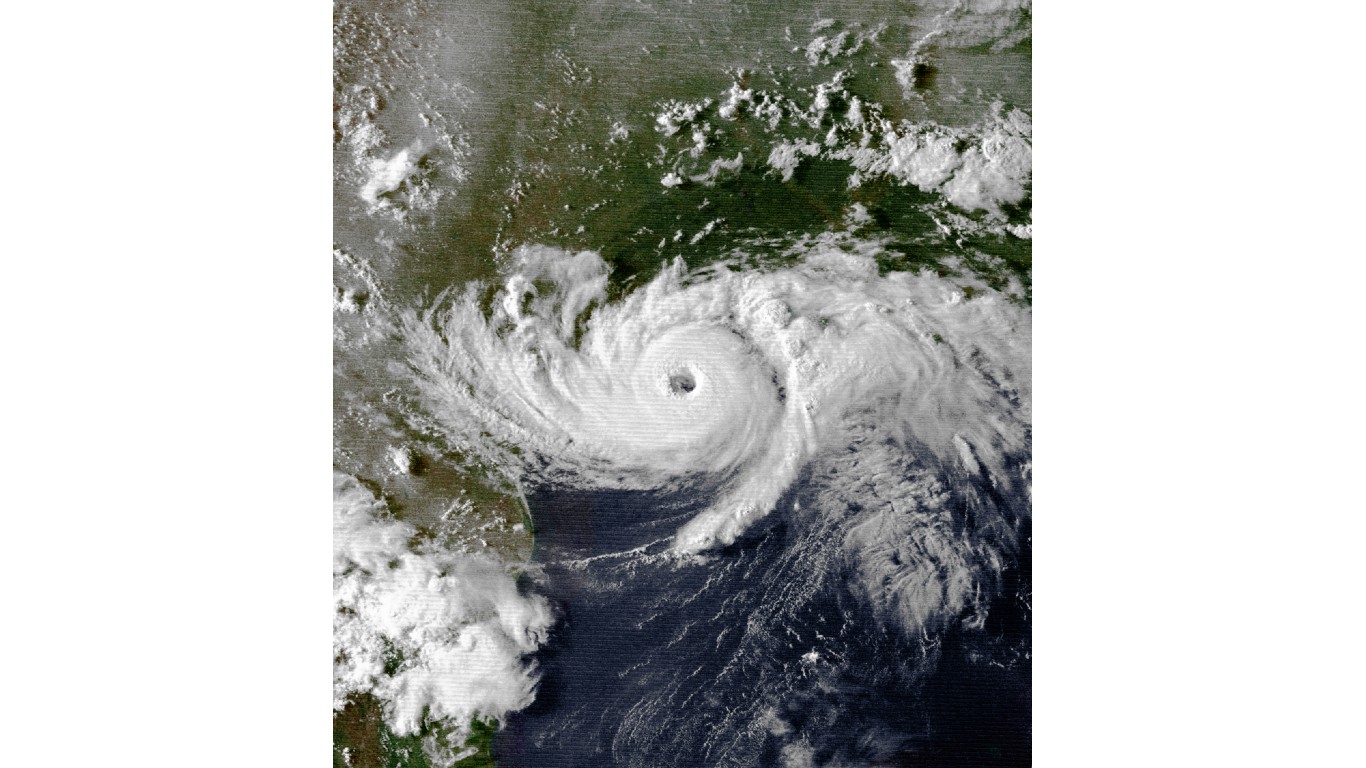
30. Alicia (1983)
> U.S. landfall: Southern Texas
> Adjusted cost: $8.8 billion
> Unadjusted cost: $3.0 billion
> Deaths: 21

29. Opal (1995)
> U.S. landfall: Pensacola Beach, Florida
> Adjusted cost: $8.9 billion
> Unadjusted cost: $4.7 billion
> Deaths: 63

28. Diane (1955)
> U.S. landfall: Outer Banks of North Carolina
> Adjusted cost: $9.1 billion
> Unadjusted cost: N/A
> Deaths: 74
[in-text-ad-2]

27. Fran (1996)
> U.S. landfall: North Carolina coast
> Adjusted cost: $9.3 billion
> Unadjusted cost: $5.0 billion
> Deaths: 27
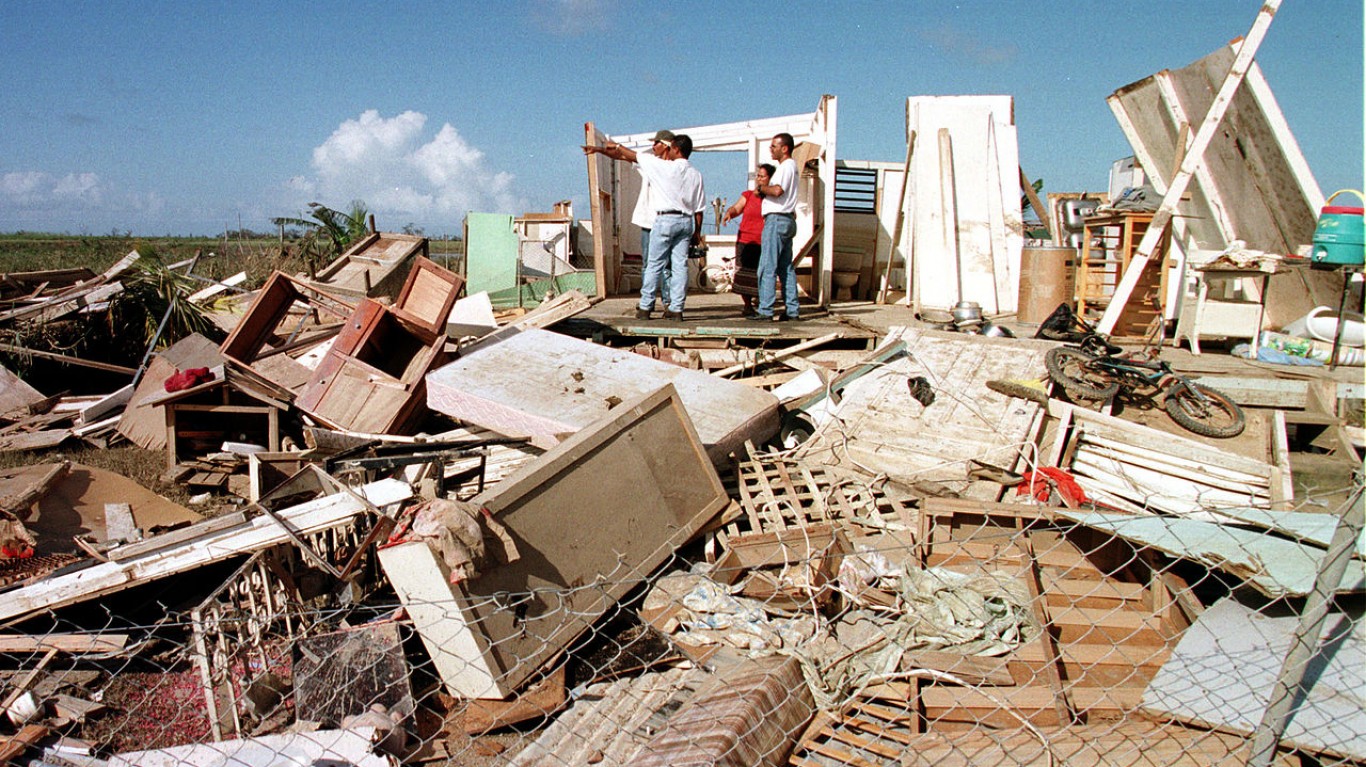
26. Georges (1998)
> U.S. landfall: Mississippi coast
> Adjusted cost: $10.7 billion
> Unadjusted cost: $6.0 billion
> Deaths: 615
[in-text-ad]

25. Camille (1969)
> U.S. landfall: East of Bay St. Louis, Mississippi
> Adjusted cost: $11.3 billion
> Unadjusted cost: $1.4 billion
> Deaths: 259

24. Floyd (1999)
> U.S. landfall: Near Cape Fear, North Carolina
> Adjusted cost: $11.3 billion
> Unadjusted cost: $6.5 billion
> Deaths: 87
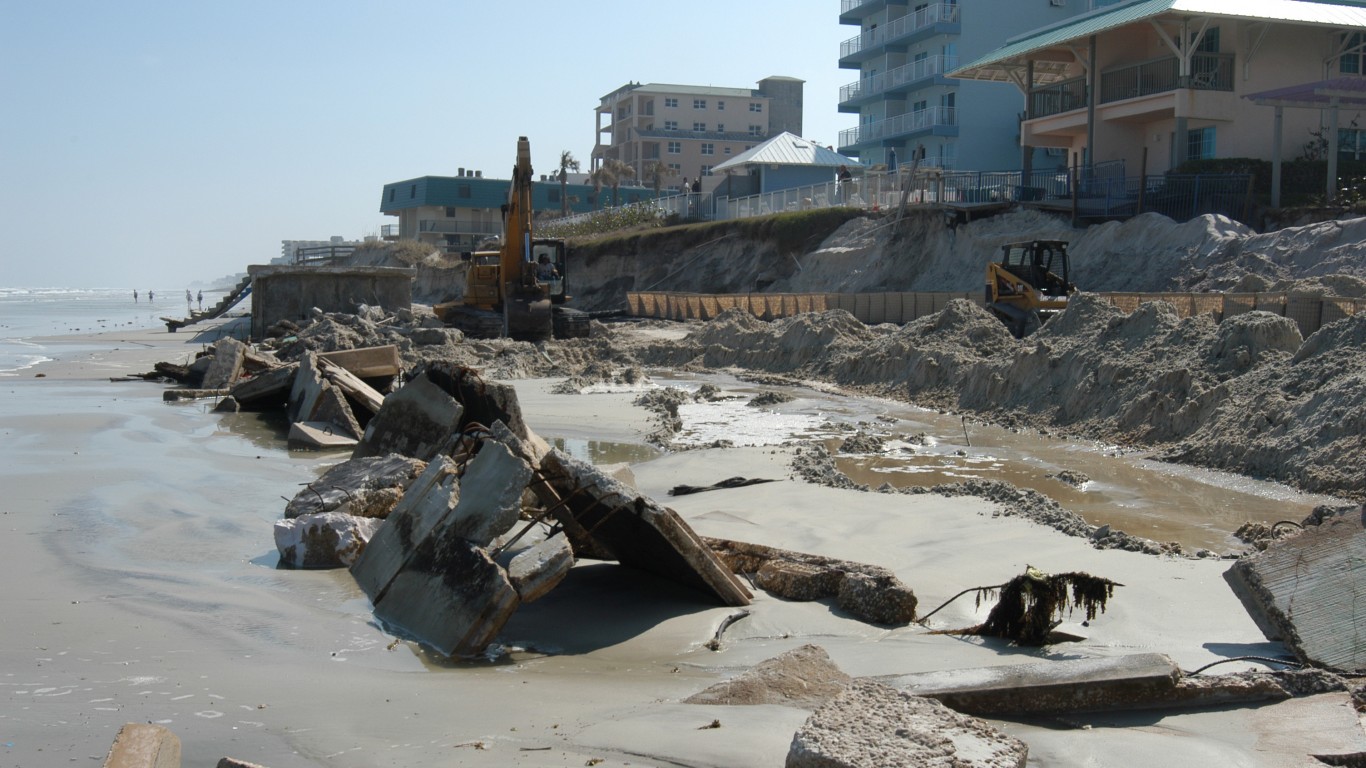
23. Jeanne (2004)
> U.S. landfall: Southern end of Hutchinson Island; East coast of Florida
> Adjusted cost: $11.5 billion
> Unadjusted cost: $7.5 billion
> Deaths: 3,035
[in-text-ad-2]

22. Matthew (2016)
> U.S. landfall: Central coast of South Carolina
> Adjusted cost: $12.1 billion
> Unadjusted cost: $10.0 billion
> Deaths: 603

21. Betsy (1965)
> U.S. landfall: Key Largo, Florida
> Adjusted cost: $13.1 billion
> Unadjusted cost: $1.4 billion
> Deaths: 81
[in-text-ad]
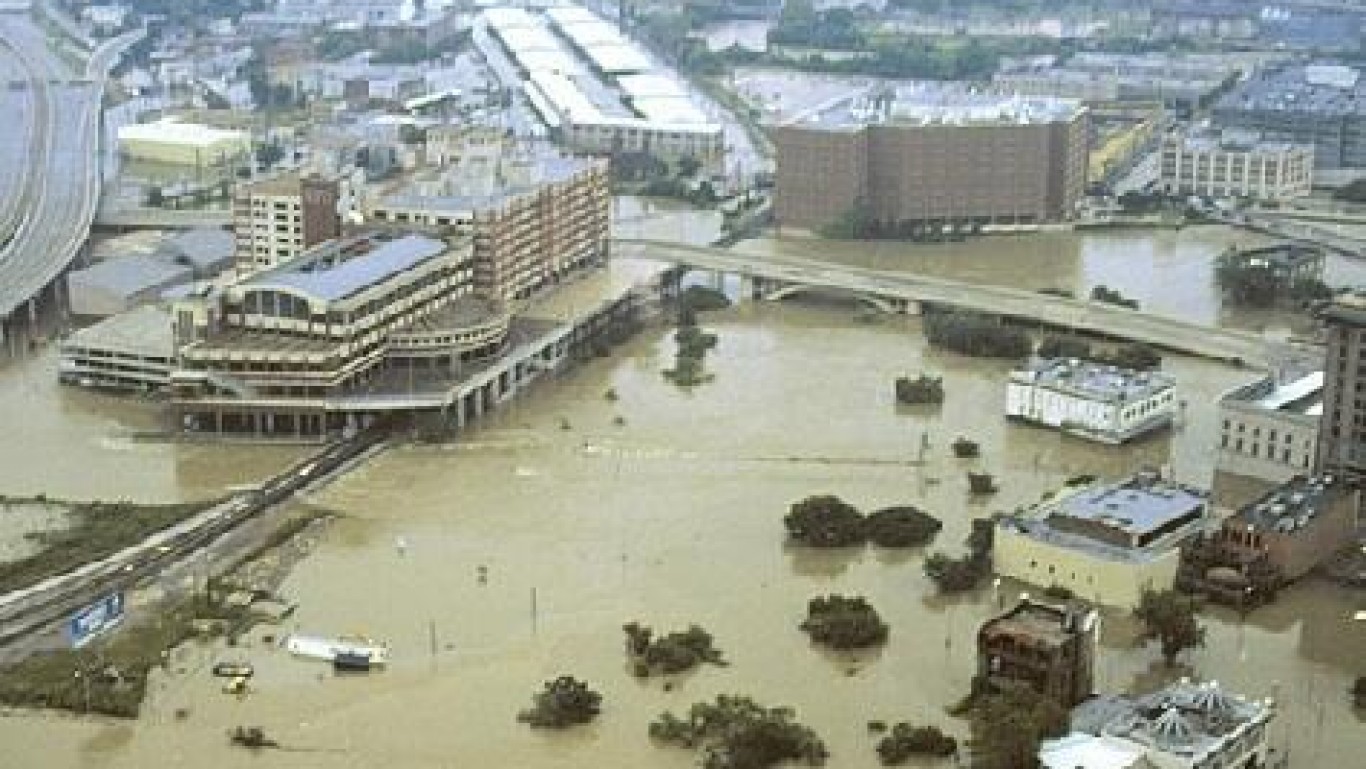
20. Allison (2001)
> U.S. landfall: Southwest of Galveston, near Freeport, Texas
> Adjusted cost: $14.0 billion
> Unadjusted cost: $8.5 billion
> Deaths: 55
19. Agnes (1972)
> U.S. landfall: Near Cape San Blas, Florida
> Adjusted cost: $14.7 billion
> Unadjusted cost: $2.1 billion
> Deaths: 128

18. Frances (2004)
> U.S. landfall: Southern end of Hutchinson Island, Florida
> Adjusted cost: $15.1 billion
> Unadjusted cost: $9.8 billion
> Deaths: 49
[in-text-ad-2]

17. Irene (2011)
> U.S. landfall: Near Cape Lookout, North Carolina
> Adjusted cost: $17.4 billion
> Unadjusted cost: $13.5 billion
> Deaths: 49

16. Hugo (1989)
> U.S. landfall: South Carolina coast near Charleston at Sullivans Island
> Adjusted cost: $21.1 billion
> Unadjusted cost: $9.0 billion
> Deaths: 61
[in-text-ad]
15. Charley (2004)
> U.S. landfall: Southwest coast of Florida near Cayo Costa, just north of Captiva
> Adjusted cost: $24.6 billion
> Unadjusted cost: $16.0 billion
> Deaths: 15

14. Laura (2020)
> U.S. landfall: Near Cameron, Louisiana
> Adjusted cost: $26.0 billion
> Unadjusted cost: $23.2 billion
> Deaths: 77
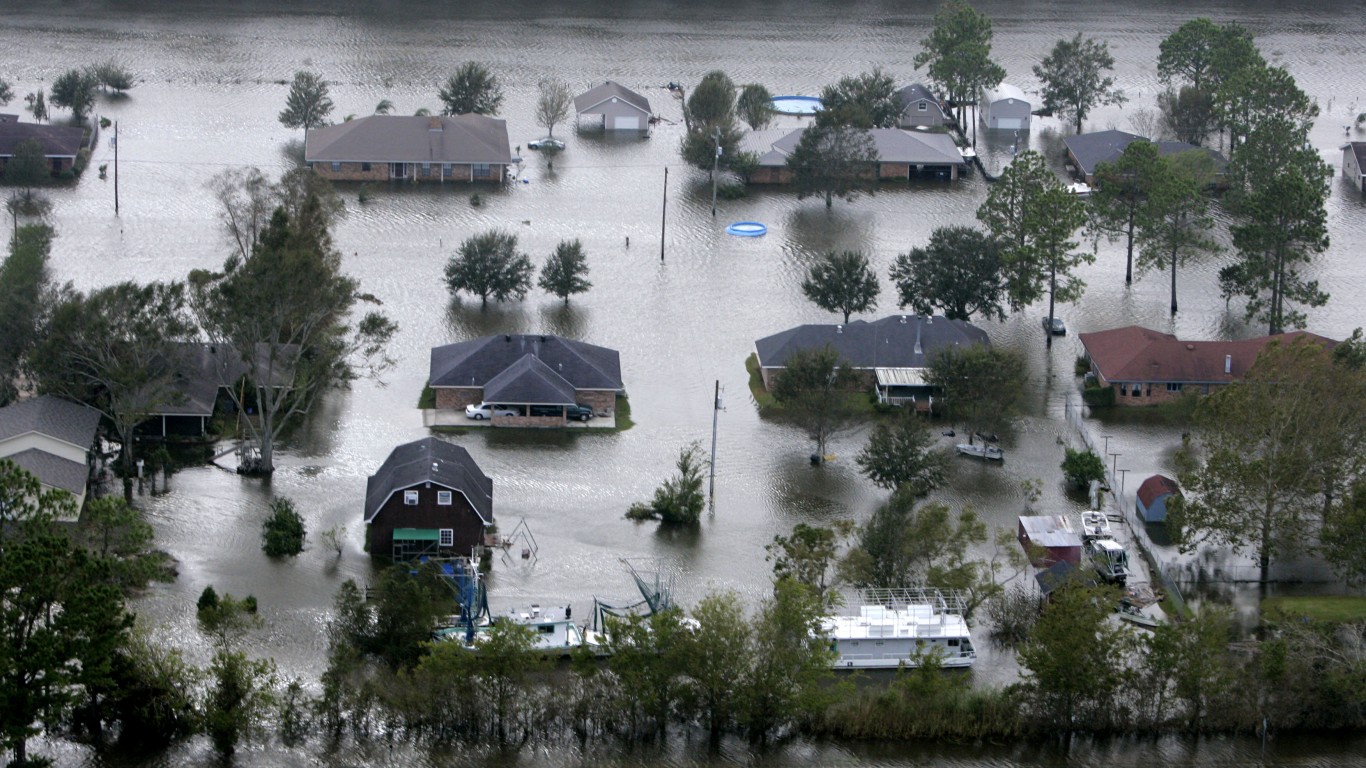
13. Rita (2005)
> U.S. landfall: Southwestern Louisiana just west of Johnson’s Bayou and just east of Sabine Pass
> Adjusted cost: $27.2 billion
> Unadjusted cost: $18.5 billion
> Deaths: 120
[in-text-ad-2]

12. Florence (2018)
> U.S. landfall: Wrightsville Beach, North Carolina
> Adjusted cost: $27.8 billion
> Unadjusted cost: $24.0 billion
> Deaths: 53
11. Wilma (2005)
> U.S. landfall: Southwestern Florida near Cape Romano
> Adjusted cost: $27.9 billion
> Unadjusted cost: $19.0 billion
> Deaths: 87
[in-text-ad]
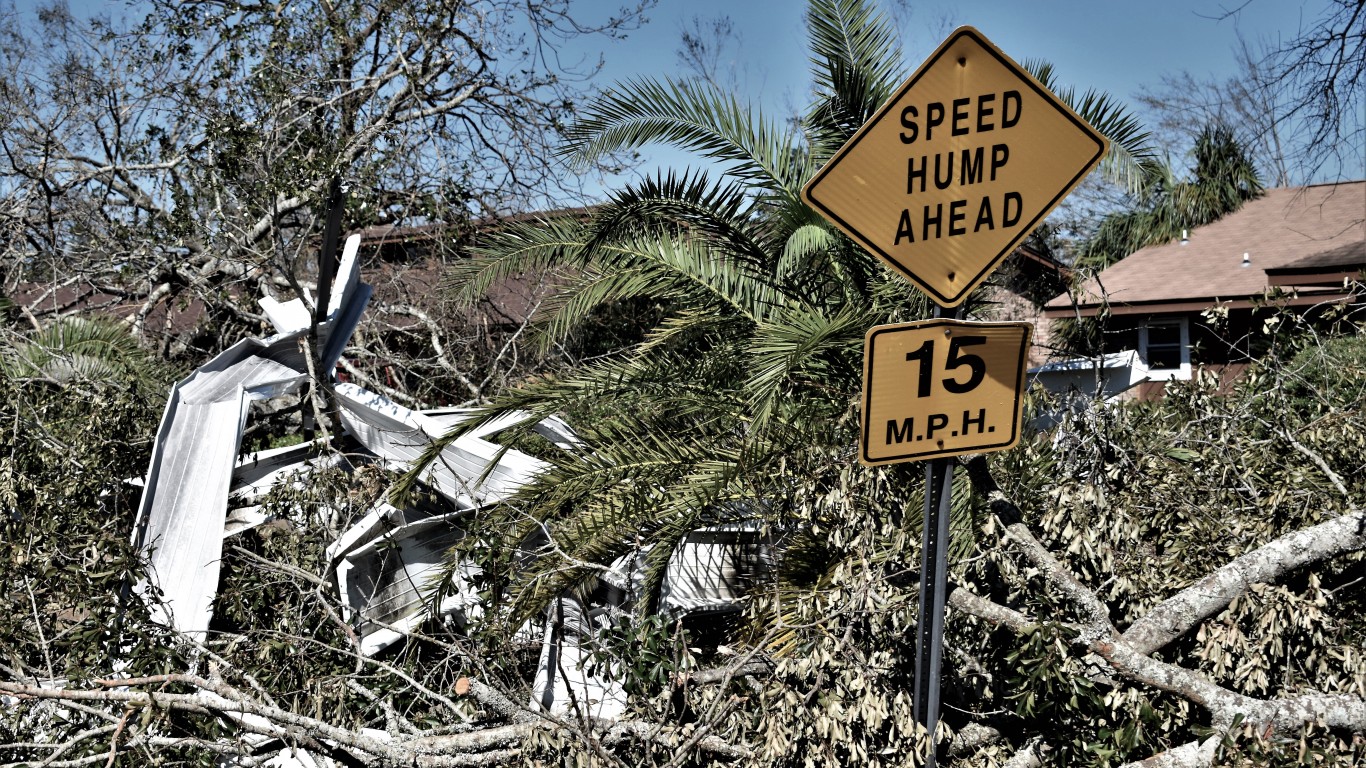
10. Michael (2018)
> U.S. landfall: Near Mexico Beach and Tyndall Air Force Base, Florida Panhandle, southeast of Panama City
> Adjusted cost: $29.0 billion
> Unadjusted cost: $25.0 billion
> Deaths: 31

9. Ivan (2004)
> U.S. landfall: Just west of Gulf Shores, Alabama
> Adjusted cost: $31.6 billion
> Unadjusted cost: $20.5 billion
> Deaths: 57
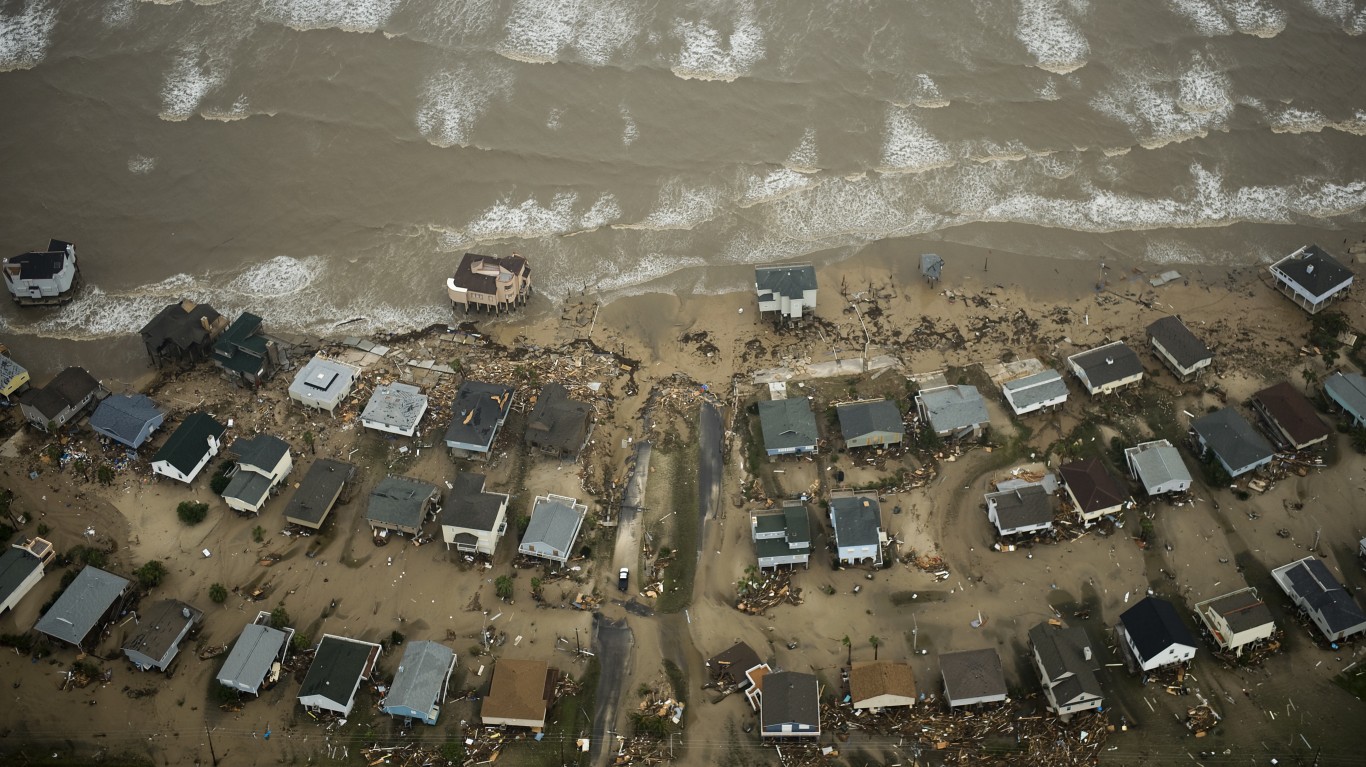
8. Ike (2008)
> U.S. landfall: Along the north end of Galveston Island, Texas
> Adjusted cost: $40.2 billion
> Unadjusted cost: $30.0 billion
> Deaths: 195
[in-text-ad-2]
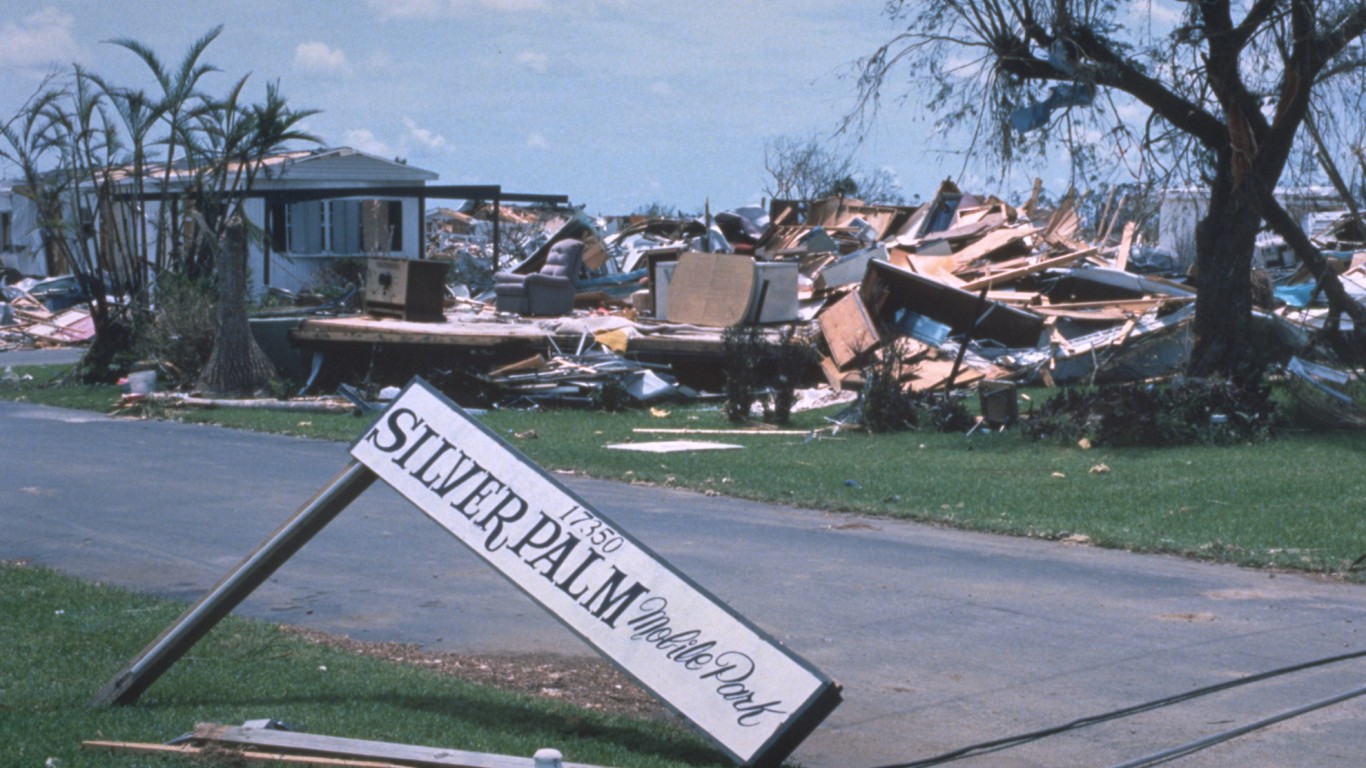
7. Andrew (1992)
> U.S. landfall: South Miami-Dade County, Florida and then again west-southwest of Morgan City, Louisiana
> Adjusted cost: $55.9 billion
> Unadjusted cost: $27.0 billion
> Deaths: 26

6. Irma (2017)
> U.S. landfall: Cudjoe Key, the lower Florida Keys
> Adjusted cost: $59.5 billion
> Unadjusted cost: $50.0 billion
> Deaths: 123
[in-text-ad]

5. Ida (2021)
> U.S. landfall: Near Port Fourchon
> Adjusted cost: $78.7 billion
> Unadjusted cost: $73.6 billion
> Deaths: 107

4. Sandy (2012)
> U.S. landfall: Near Brigantine, New Jersey
> Adjusted cost: $81.9 billion
> Unadjusted cost: $65.0 billion
> Deaths: 233

3. Maria (2017)
> U.S. landfall: Along the coasts of Humacao, Naguabo, and Ceiba municipalities in Puerto Rico
> Adjusted cost: $107.1 billion
> Unadjusted cost: $90.0 billion
> Deaths: 4,645
[in-text-ad-2]

2. Harvey (2017)
> U.S. landfall: Northern end of San Jose Island about 5 mi east of Rockport, Texas
> Adjusted cost: $148.8 billion
> Unadjusted cost: $125.0 billion
> Deaths: 103
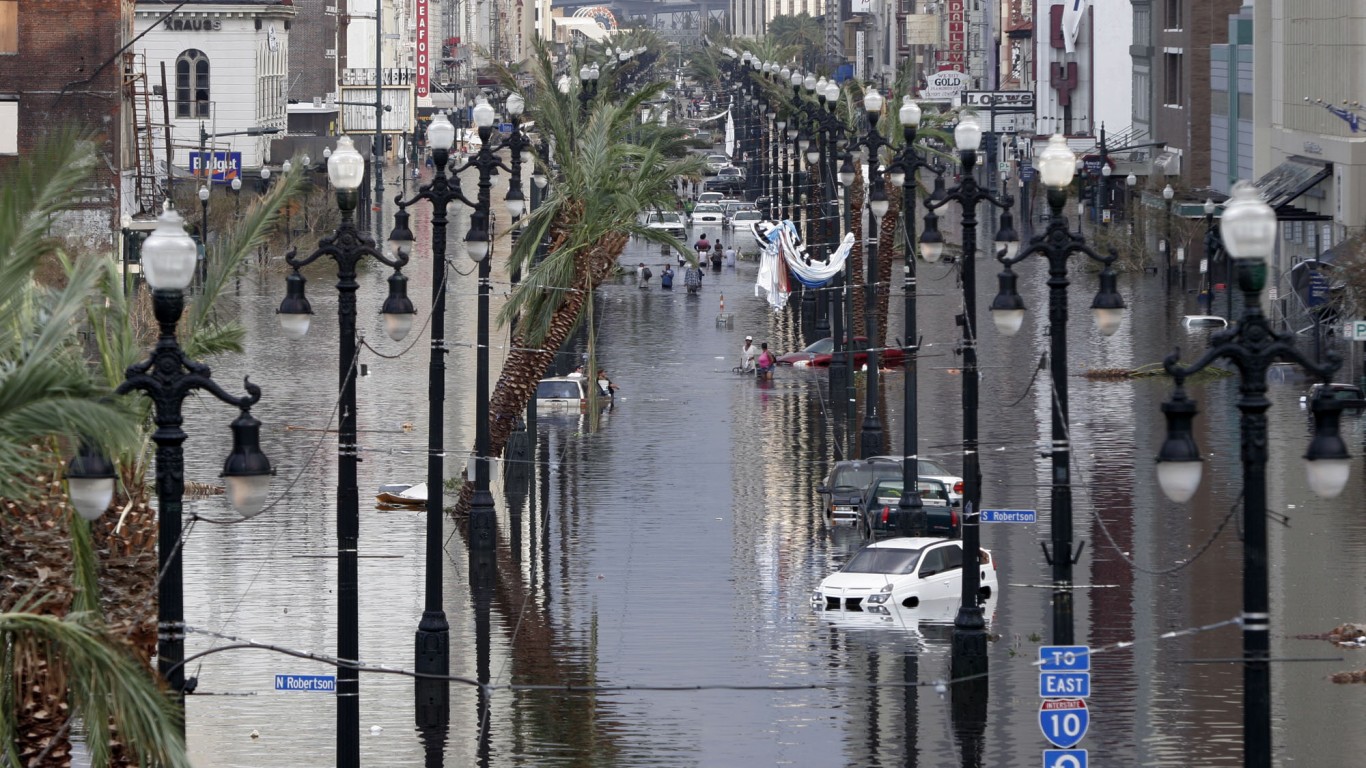
1. Katrina (2005)
> U.S. landfall: Miami-Dade County and Broward County, and again near Buras, Louisiana
> Adjusted cost: $186.3 billion
> Unadjusted cost: $125.0 billion
> Deaths: 1,833
The Average American Has No Idea How Much Money You Can Make Today (Sponsor)
The last few years made people forget how much banks and CD’s can pay. Meanwhile, interest rates have spiked and many can afford to pay you much more, but most are keeping yields low and hoping you won’t notice.
But there is good news. To win qualified customers, some accounts are paying almost 10x the national average! That’s an incredible way to keep your money safe and earn more at the same time. Our top pick for high yield savings accounts includes other benefits as well. You can earn up to 3.80% with a Checking & Savings Account today Sign up and get up to $300 with direct deposit. No account fees. FDIC Insured.
Click here to see how much more you could be earning on your savings today. It takes just a few minutes to open an account to make your money work for you.
Our top pick for high yield savings accounts includes other benefits as well. You can earn up to 4.00% with a Checking & Savings Account from Sofi. Sign up and get up to $300 with direct deposit. No account fees. FDIC Insured.
Thank you for reading! Have some feedback for us?
Contact the 24/7 Wall St. editorial team.

 24/7 Wall St.
24/7 Wall St.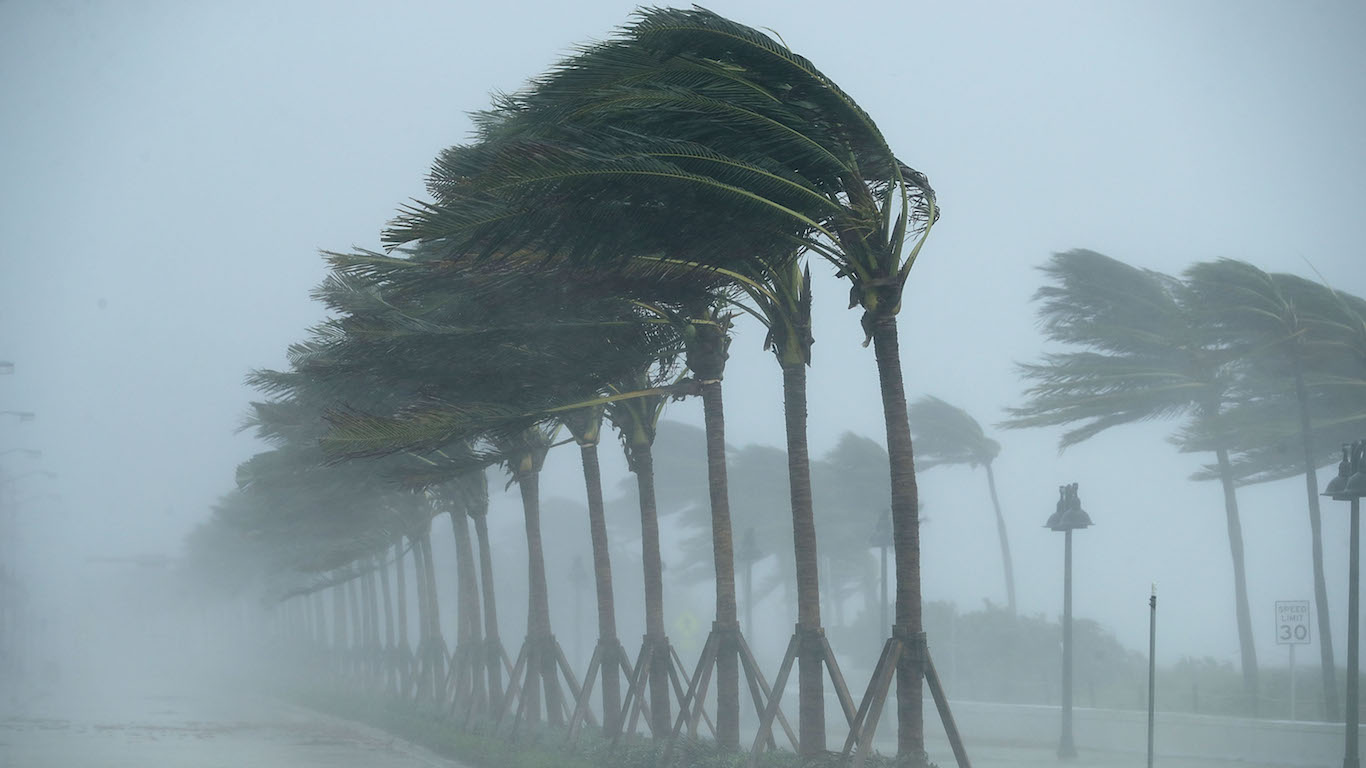 24/7 Wall St.
24/7 Wall St. 24/7 Wall St.
24/7 Wall St.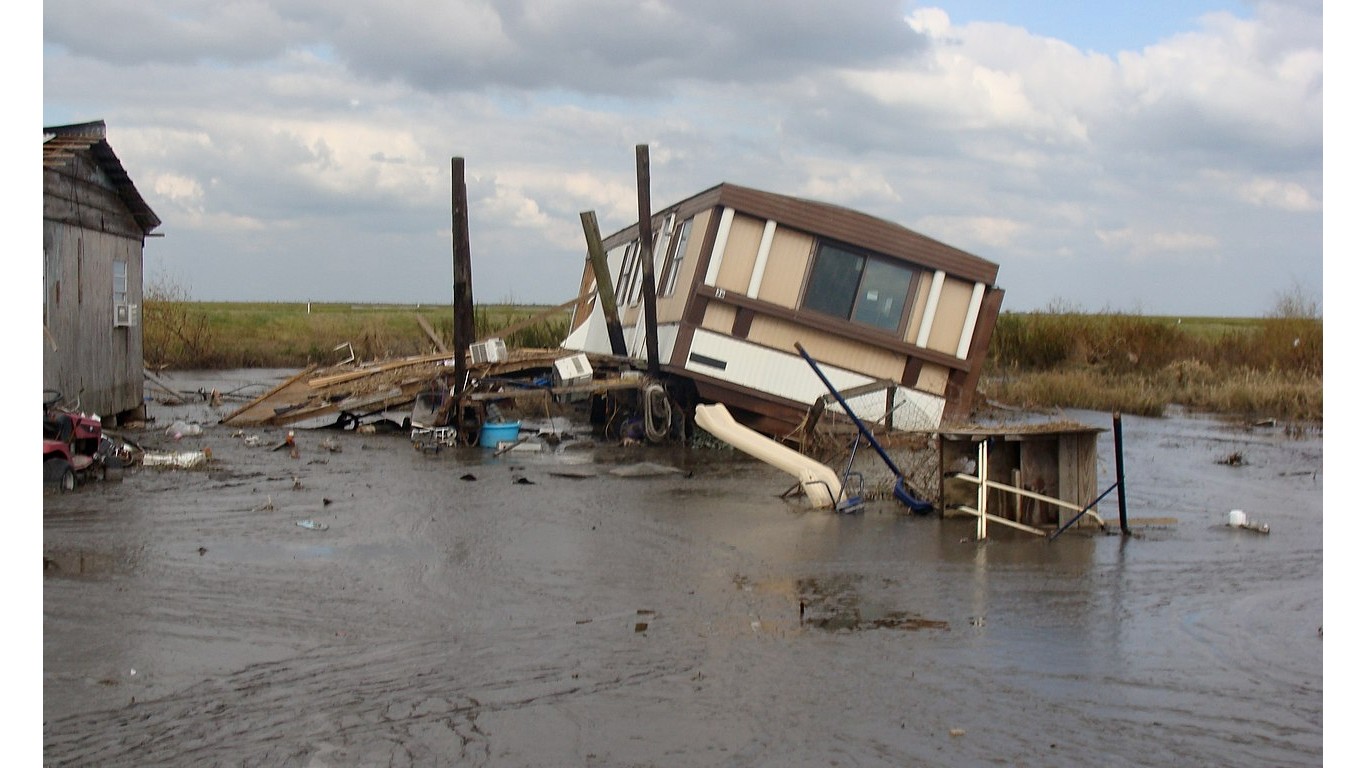
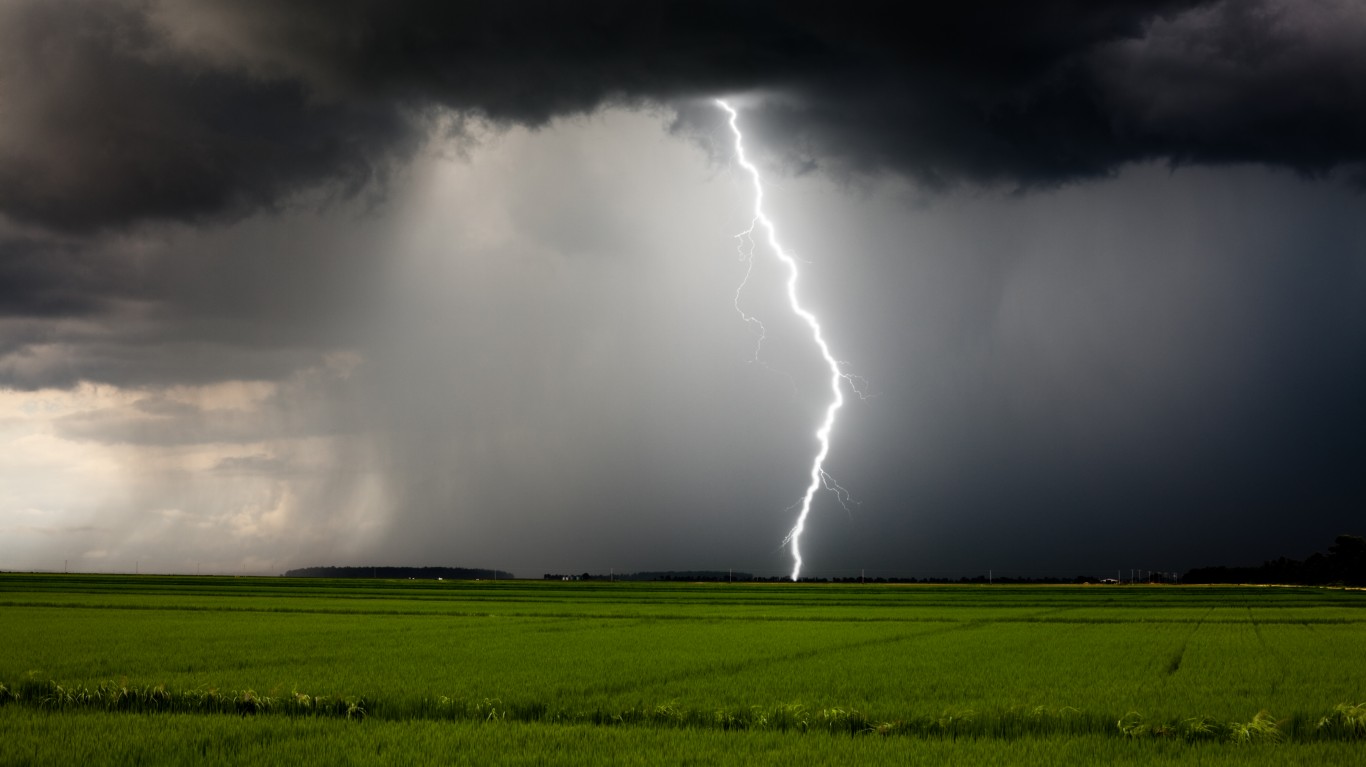 24/7 Wall St.
24/7 Wall St.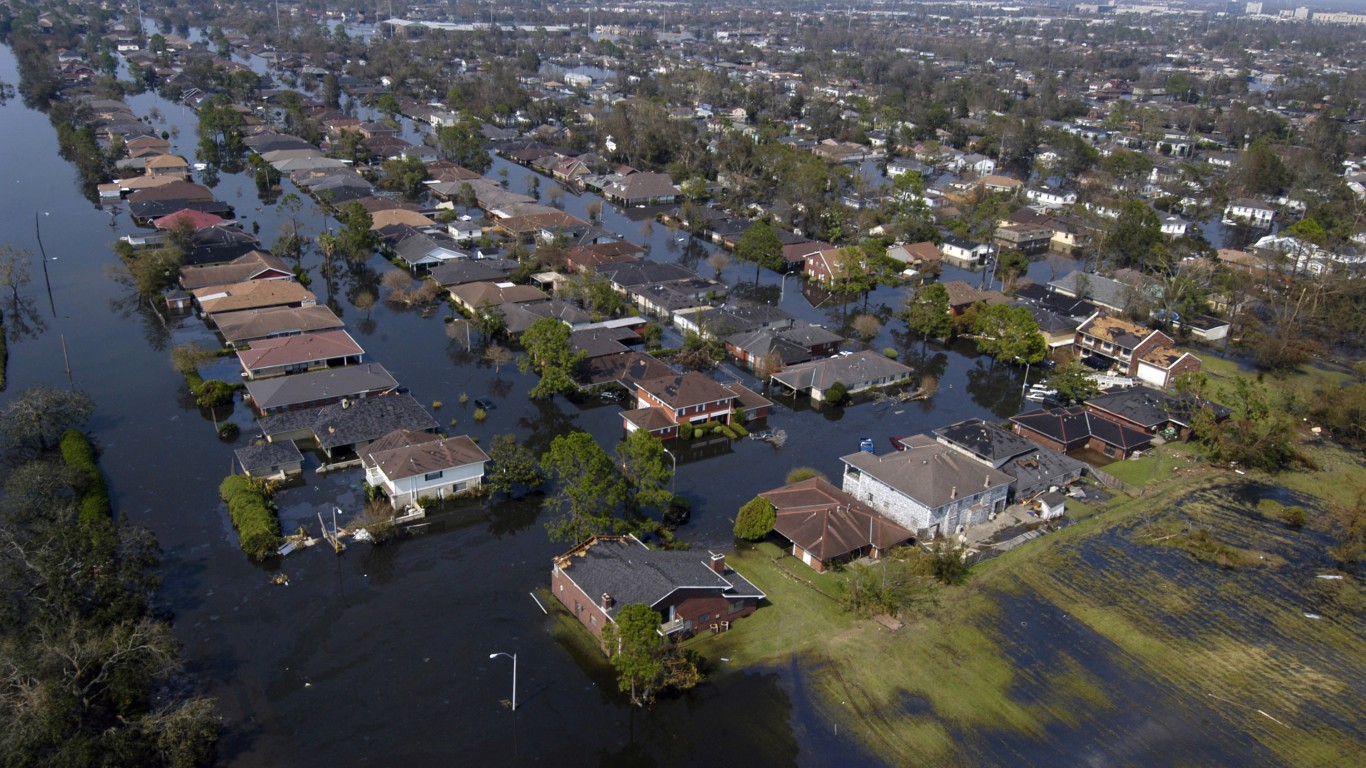 24/7 Wall St.
24/7 Wall St.